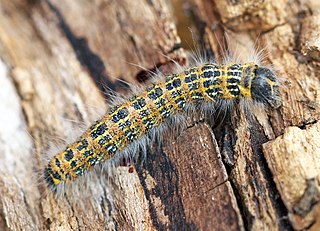 Adult Buff-tips may be experts at disguise, but the brightly coloured caterpillars can’t be missed.
Adult Buff-tips may be experts at disguise, but the brightly coloured caterpillars can’t be missed.
Photo: Ben Sale
Scientific name: Phalera bucephala
Cornish name: ‘Gouwan’ is the general word for moth
What to look for:
- Colouring: Silver-grey with pale tips to its wings and buff-coloured hair on the thorax. It rests on branches with wings held along its body, looking very like an old twig. The caterpillars have black and yellow stripes with rows of black spots on an orange background.
- Size: The caterpillars grow up to 60 mm. Adult wingspan is up to 66 mm – females are larger than males.
- Where: Close to mixed woodland and trees, including parks and gardens
- When: The adult flies from May until August. Larvae can be seen from July until October.
- Similar species: None.
 With their highly effective camouflage, adult Buff-tips can be very hard to spot. Once found, however, it’s impossible to confuse them with any other species. They are unmistakeable when resting, holding their wings vertically around their body to masquerade as a broken birch twig.
With their highly effective camouflage, adult Buff-tips can be very hard to spot. Once found, however, it’s impossible to confuse them with any other species. They are unmistakeable when resting, holding their wings vertically around their body to masquerade as a broken birch twig.
The caterpillars are also very recognisable, but far from blending into the background, their bright yellow, orange and black colouring advertises to predators that they are poisonous if eaten. They feed in groups until reaching the final instar stage, after which they overwinter in a cell beneath the ground. Their foodplants are mainly birch, oak, hazel and sallows, but they can also be found on other broadleaf trees.
Did you know…?
…The caterpillars don’t just deter predators with their bright colours. They also have an unpleasant smell.
More information and references:
Chinery, M., 2005. Collins Complete Guide to British Insects. Collins, London.
Waring, P., Townsend, M. and Lewington, R., 2009. Field Guide to the Moths of Great Britain and Ireland (second edition). British Wildlife Publishing, Gillingham, Dorset.
Published: July 2014 (updated April 2020)
Author: Amanda Scott
Photos: Caterpillar (Ben Sale from UK / CC), adult moth (Böhringer Friedrich (Own work), both via Wikimedia Commons
